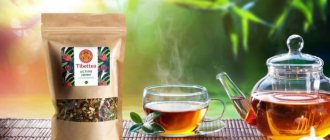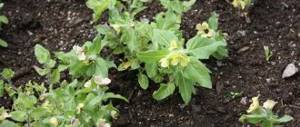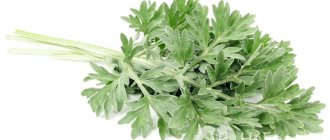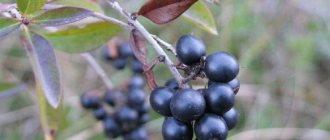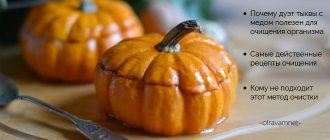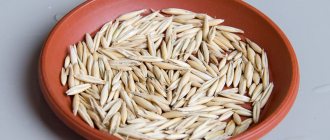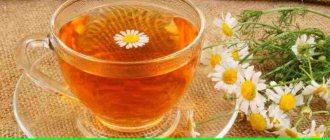The inconspicuous tansy with bright yellow flowers is a perennial plant (shrub) and has many beneficial properties. This small shrub usually grows in a field or on the edge of a forest, and its ability to grow is so great that it thrives along busy highways; it is difficult to get rid of it even in a carefully weeded garden.
Related articles:
How to use tansy correctly Treating yourself correctly with tansy flowers Using tansy for worms Tansy plant: photos and properties The benefits and harms of tansy
The plant has a characteristic odor; in Czech the name of the bush is translated as “musk” and, despite its inconspicuousness, is considered very useful among connoisseurs of traditional medicine. However, do not forget that this harmless plant also has contraindications.
How does tansy poisoning occur?
Tansy contains not only vitamins, glycosides, polysaccharides and other beneficial substances, but also a toxic component - thujone. Like cannabis terpenoids, thujone is a cannabinoid receptor agonist, which can cause hallucinations. In addition, thujone blocks the receptors of one of the neurotransmitters - gamma-aminobutyric acid, which in large doses provokes the development of convulsive seizures.
Poisoning occurs when consuming more than 0.5 liters of tansy decoction per day or when preparing a solution with a higher concentration of plant material than recommended.
Children can become poisoned by accidentally drinking tansy infusion.
Tansy against worms: recipes and method of use, effectiveness and limitations
Many patients are confident that a parasitic infection can only be overcome with the help of medications. But some experts argue that this is not so.
Nowadays, there are many treatment methods, one of which is tansy for parasites.
How effective is this medicine?
Impact of tansy
Tansy, like other medicinal herbs, contains many useful substances. It has antiparasitic and restorative effects. The thing is that it contains components in the form of flavonoids, vitamins, esters, minerals and proteins.
Tansy flowers also have other effects in the form of:
- combating inflammatory processes in the digestive system;
- relieving discomfort and aches in some parts of the body;
- creating a choleretic effect;
- stabilizing the acid-base balance and combating high acidity;
- normalization of temperature due to parasitic infection;
- cleansing the body of helminths, waste, toxins and decay products;
- improving the appearance of the skin;
- positive effect on the functioning of the sexual sphere and normalization of the menstrual cycle in women;
- elimination of uncomfortable symptoms in the form of constipation, diarrhea, pain in the abdominal area;
- combating allergic manifestations.
If you know how to drink tansy from parasites correctly, then the body can not only cleanse itself, but also restore the functioning of its internal organs.
Features of using tansy
Any part of the plant can have a healing effect on the body. But tansy seeds and flowers are often used against parasites. Based on them, decoctions, infusions, tinctures and powders are made. The effect of the product will depend on how it is prepared.
Experts say that tansy herb against worms has an antiparasitic effect when it is in powder. This process can be easily explained. The thing is that the decoction or infusion requires good heat treatment, as a result of which the effect of the medicine will decrease several times.
In addition to all this, when taken internally, the decoction or infusion will act only on the stomach and liver for a long time, and the rest, a small part, enters the intestines. This will not be enough to completely destroy the worms.
Tansy powder, when it enters the digestive system, is not absorbed by the gastric walls, therefore it penetrates unchanged into the intestines. Tansy lingers in the body and is released only with feces.
With this use, helminths will not be able to resist the attack. Some of them will die and be passed along with the feces, while others will lose the ability to attach to the intestinal mucosa.
Naturally, dead specimens will gradually leave the body with each bowel movement. But they also pose a danger to humans. The thing is that even after death they release toxins and decay products that lead to intoxication of the body. To quickly cleanse the body, a decoction of tansy will help.
To eliminate helminths, you need to consume tansy with extreme caution. Dosages must be carefully observed. Its decrease can lead to a weakening of the medicinal properties, and its excess can lead to side effects.
Tansy for parasitic infection: types of use
In what form and how to take tansy for parasites depends on the type of parasitic infection.
This herb is effective against many helminths:
- An infusion of tansy for worms is taken when roundworms in the form of roundworms are detected.
- It is recommended to use tansy as an enema for those who have a large number of pinworms.
- The use of the popular triad of tansy, wormwood and cloves is recommended in the presence of tapeworms in the form of tapeworm, bovine or pork tapeworm.
- If the type of parasitic infection is not established, then you can use the powdered form of the plant or make enemas from it.
After the patient has decided on the type of treatment, he needs to know in what dosage to use tansy.
Contraindications for use
Tansy is an excellent remedy against worms, but, like any remedy, there are a number of limitations such as:
- increased susceptibility to the components of the drug;
- the presence of allergic reactions;
- gestation period. Taking tansy can lead to miscarriage or premature labor due to increased uterine tone;
- breastfeeding period. Tansy penetrates the milk, as a result of which it becomes bitter, and the toxic effect can harm the child;
- presence of arterial hypertension;
- diseases of the cardiovascular system;
- period of menstruation, as blood flow increases;
- diseases of the kidney and liver structures;
- the presence of ulcerative processes in the intestines and stomach;
- development of cancer;
- the occurrence of bacterial and viral infections, exacerbations of chronic inflammatory processes.
These contraindications should be taken into account, since tansy can only lead to a deterioration in the general condition if the immune function is severely weakened due to any disease.
| Could there be a fever from worms? |
Symptoms
The first symptoms of tansy poisoning appear several hours after taking the decoction orally. These include:
- nausea;
- vomit;
- diarrhea;
- stomach ache.
If the victim is not immediately given help, then these symptoms of tansy poisoning include:
- dizziness;
- headache;
- increased nervous excitability;
- restlessness and anxiety;
- increased physical activity;
- convulsions;
- a sharp decrease in urine output;
- swelling;
- icteric staining of the mucous membranes and skin;
- decreased blood pressure;
- bradycardia.
Tansy poisoning can be not only acute, but also chronic. The latter develops when a person takes tansy decoction for a long time. Chronic tansy poisoning is characterized by the development of a depressive state.
Severe forms of tansy poisoning can be fatal.
Source: depositphotos.com
Termination of unwanted pregnancy
Tansy is a plant used in gynecology to induce menstruation when delayed. In some cases, the delay is caused by a violation of physiological processes, in others – by fertilization of the egg.
First of all, remember that even in the early stages, self-termination of pregnancy - miscarriage - can cause a number of health problems, so it is advisable to entrust the procedure to a doctor who will prescribe special medications (there are more than enough of them on the market today).
In the later stages of pregnancy, neither pills nor traditional methods will bring the desired result; in such cases, surgical or vacuum abortion is performed.
To terminate pregnancy, traditional healers recommend tansy and oregano. Both plants cause miscarriage:
- Tansy - due to its high percentage of thujone, it kills the embryo, activates uterine contractions, promoting its excretion.
- Oregano – causes uterine bleeding in women, causing miscarriage.
A decoction of both plants is prepared and taken in the same way. 2 tbsp. herbs, pour 250 ml of boiling water, leave for 3 hours (preferably in a thermos). Then strain. Take 2 tbsp. 3 times a day.
An important factor is how many days to drink the decoction. Take it for 2 days, then prepare a new one. Drink until your period comes.
Note! Reviews about “home” abortions using herbs are mostly negative (both from the women themselves and from gynecologists). Therefore, if you suspect an unwanted pregnancy, consult a specialist! Please know that using plants for these purposes has nothing to do with a healthy lifestyle!
First aid for tansy poisoning
When the first symptoms of acute tansy poisoning appear, the victim needs to rinse his stomach. This allows you to quickly remove a significant amount of toxic substances from the body, reducing the severity of intoxication. To lavage the stomach, the victim must drink at least half a liter of water or a pale pink solution of potassium permanganate, then induce vomiting by irritating the root of the tongue with fingers or the handle of a cutlery. Gastric lavage should be performed at least 2-3 times until particles of previously eaten food are no longer detectable in the vomit.
To neutralize tansy toxins that have managed to penetrate the small intestine, you should take a drug with a sorbing effect. This could be Filtrum STI, Polysorb MP, Smecta or Activated Carbon.
With severe diarrhea, the body quickly loses fluid and minerals. To correct the water-salt balance, the victim should drink glucose-salt solutions, for example Regidron. This must be done often and in small portions, 1-2 sips.
Description, distribution, collection
Tansy is a perennial plant, up to 160 cm high. The root is branched and woody. The straight stems end in a flat, branched umbel. The leaves are ovate, pinnate. The flowers are yellow, tiny, about 10 mm in diameter, collected in inflorescences. The fruit is an ovoid achene with seeds. Blooms from July to September.
The places where tansy grows are quite varied. It is found in forests, rocky areas, roads, and railroad tracks. The plant prefers drier and rocky places.
To obtain medicinal raw materials, inflorescences with young leaves are collected; the collection is carried out during flowering. The hard parts of the stem are not used. The plant dries quickly in the shade.
When artificially drying, the temperature should not exceed 35°C. The grass has a very pungent smell. For storage, place the raw materials in paper or fabric bags, store in the dark and dry.
When is medical help needed?
In case of minor tansy poisoning, first aid measures usually quickly lead to an improvement in the condition, and the victim does not go to the doctor. Medical assistance is required in the following cases:
- despite all the measures taken, the patient’s condition does not improve or worsens;
- poisoning occurred in a pregnant woman or child;
- the amount of urine discharge has decreased or jaundice has developed;
- a convulsive attack and/or disturbances of consciousness occurred.
Treatment of patients with severe tansy poisoning is carried out in a toxicology department. Since there is no specific antidote to thujone, symptomatic therapy is carried out aimed at maintaining the functions of all affected systems and organs. Patients are prescribed intravenous administration of saline solutions and glucose, and vitamin therapy. If seizures develop, anticonvulsant therapy is administered.
Health effects
Tansy is a medicinal plant that can easily and relatively quickly cope with many health problems. Look at the medicinal properties of flowers and young leaves:
- Immune system support.
- Cell protection and regeneration.
- Strong antibiotic effects.
- Reduced fever.
- Antiseptic, detoxifying, antiparasitic effects.
- Supports digestion, regulates bowel movements.
- Acceleration of wound healing, skin disinfection.
- Diuretic effects.
- Removal of uric acid – treatment of gout, rheumatism.
- Regulate menstruation, eliminate menstrual pain.
- Cleanses and improves liver function, treats hepatitis.
Interesting! An interesting factor about what tansy treats is the effect on jaundice. For this disease, it is recommended primarily for men, since in women the therapeutic effects on the disease are minimal. The reasons for such “discrimination” are currently unknown.
Possible consequences
In most cases, tansy poisoning goes away without any long-term consequences.
In case of severe poisoning, patients may experience serious damage to the liver or kidney tissue, which can cause the formation of chronic failure of these organs.
Acute tansy poisoning is especially dangerous for pregnant women and children. The child’s body is characterized by physiological immaturity and high sensitivity to toxins, so tansy poisoning in children is usually more severe and often leads to the development of complications. In pregnant women, tansy poisoning can cause spontaneous miscarriage due to increased tone of the muscular layer of the uterus.
Flowers
The official instructions for use indicate the antiparasitic, choleretic, antimicrobial, anti-inflammatory, astringent effects of the herb.
Article for you:
Medicinal properties of the izmagen plant and its use in folk medicine
Recommendations for use: intestinal parasites, diseases of the gallbladder, gastrointestinal tract and liver.
Contraindications: pregnancy, breastfeeding, childhood.
Infusion preparation: 1 tbsp. for 250-300 ml of boiling water.
Liver cleansing
To detoxify the liver, the plant is often used in combination with yarrow, which has similar effects.
Tea for the liver
1/2 tsp. dried herb, pour 250 ml of boiling water, leave for 7-10 minutes. Strain. To cleanse the liver, drink small sips throughout the day. For acute organ health problems, drink a glass of tea 1-2 times a day.
Article for you:
Water pepper: medicinal properties and contraindications
Take it for 5-7 days, then take a week-long break, during which take an infusion of yarrow. Prepare it as follows. 1 tbsp. dried raw materials, pour 250 ml of boiling water, strain after 10 minutes of infusion, drink in sips throughout the day.
Joint diseases
What else does tansy help with? What diseases does it relieve? Due to its anti-inflammatory and analgesic properties, the plant is used externally for joint diseases.
Baths for hands and feet
5 tbsp. raw materials, pour 1/2 liter of boiling water, leave for 15 minutes. Pour the strained infusion into a bowl, add warm water to the required volume, and wet your hands or feet in the liquid. The duration of the bath is 10-15 minutes. The result of the procedure is a strong antirheumatic effect.
Tincture
Fill a handful of herbs with 40% alcohol so that the raw material is drowned. Leave in a warm place for 14 days. Strain. Use for rubbing against rheumatism, for preparing ointments.
Ointment
Mix tincture and coconut oil (1:5). Use to rub affected muscles and joints.
For the beauty of body and skin
The use of tansy in cosmetology is a good option for slowing down aging and improving the condition of problem skin. The plant has a number of positive effects:
- Rejuvenation.
- Elimination of irritations.
- Treatment of inflammation.
- Reducing skin oiliness.
- Reduction of allergic manifestations.
- Acceleration of healing of small wounds.
The easiest way to use it is with compresses. Dampen a clean cloth with warm broth and apply to your face for 20 minutes. You can also freeze the infusion in an ice cube tray, then use ice cubes to rub the skin.
A mask will help prevent the appearance of wrinkles. Mix 1 tsp. cottage cheese, cream, honey with 3-4 tbsp. decoction (adjust the amount of liquid according to the consistency of the mask - it should be creamy). Apply to face and neck for 20 minutes.
Repellent action
In the form of bunches or powdered dried flowers, the herb is a well-known remedy for insects in the home and external parasites - it works against bedbugs, lice, fleas, ticks, etc. Bunches can be hung in the house, the powder can be poured into bowls and placed in a place safe for residents.
You can also prepare a tincture. Pour a handful of flowers and 3 chopped garlic cloves with 100 ml of alcohol (40-60%), leave to infuse for a week. Then strain and pour into a spray bottle. Treat your trousers with the extract before going into the forest - this will repel ticks. For aroma, you can add a few drops of essential oil.
